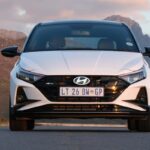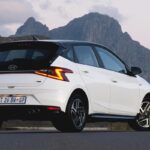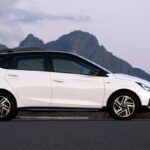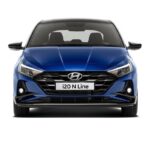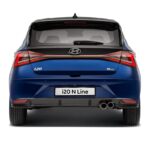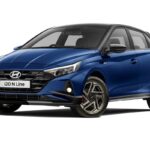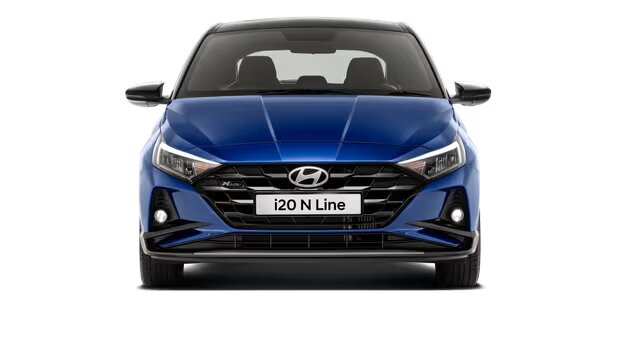
A refreshed Hyundai i20 hatchback has arrived in South Africa with stylish upgrades and a reduced pricing structure! Calvin Fisher braved a wet winter storm in Cape Town to experience Hyundai’s freshly reiterated i20 hatch in the metal. Is the latest i20 worth a closer look? Read on…
As South Africa’s roads face an onslaught of new metal from China and the Pacific Rim, the Korean and Japanese manufacturers have had to batten down the hatches… Or is that hatchbacks – a segment somewhat less affected due to the warring factions mostly competing in the SUV markets, both small and large.
It’s here in the B-segment hatchback arena where the i20 remains a stalwart, competing against all manner of rivals including the Volkswagen Polo, Suzuki Swift and Renault Clio.
But Hyundai isn’t sending its i20 into the fight without an impressive array of features and attributes, perhaps the most significant of which being the turbocharged 1.0-litre, 3-cylinder petrol engine found under the bonnet of the i20 N Line derivative.
Before I share my findings with you, let’s quickly look at the powertrain hierarchy of the updated Hyundai i20 range.
What engines power the latest Hyundai i20?
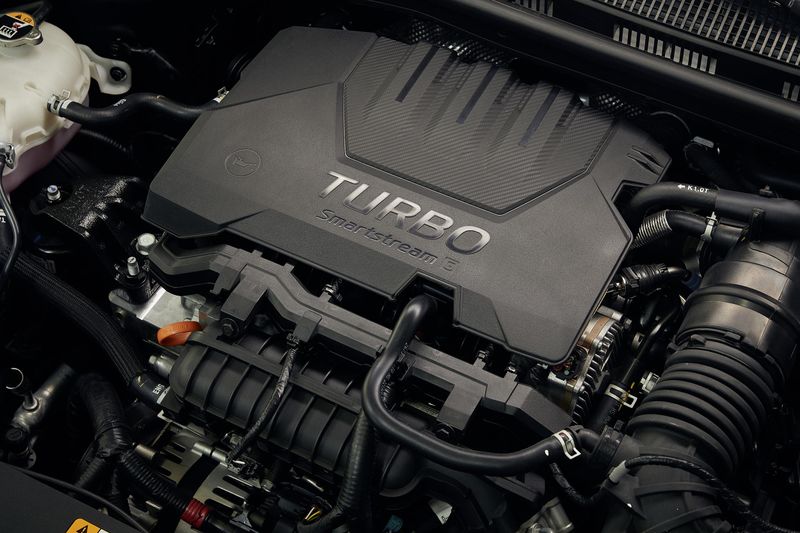
In addition to the feisty 1.0-litre engine in the i20 N Line, there are lesser engines in the trim levels beneath it such as the naturally aspirated 1.2-litre Kappa engine with 61 kW and 114 Nm of torque found in the entry-level i20 Premium derivative or buyers can opt for the larger capacity 1.4-litre Kappa engine with 73 kW and 133 Nm in the i20 Executive derivative.
The range-topping i20 N Line is endowed with 90kW and 172Nm and is paired with a 7-speed dual-clutch automatic transmission. Elsewhere in the range, Hyundai will give you a 5-speed manual or 4-speed conventional automatic at a significant cost reduction! See pricing details below!
What improvements have been made to the updated Hyundai i20?
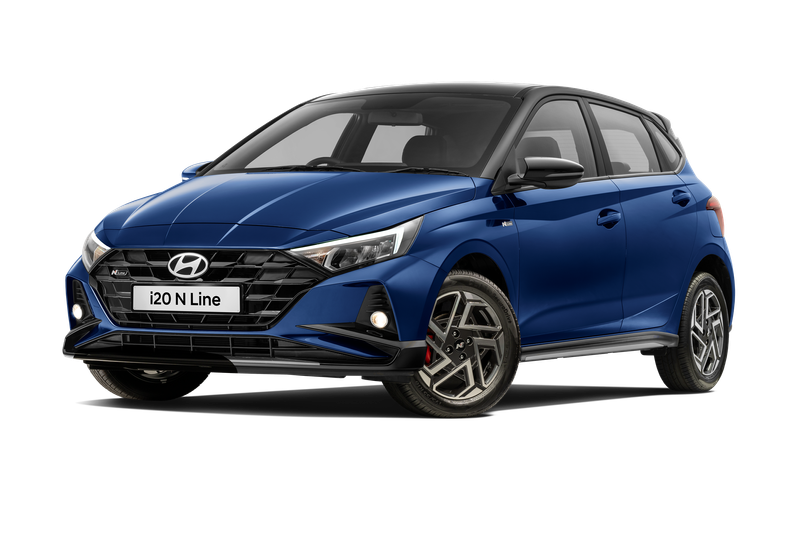
The updated Hyundai i20 is undoubtedly one of the most stylish and eye-catching hatchbacks on the market. Boasting attractive styling, appealing proportions and a pleasant cabin, the i20 has much to offer.
Where the previous iterations i20 models were hardly evocative, the latest model on which this “facelift” is based did much to reform Hyundai’s image – with some motorsport cred inherited from the marque’s multiple decades of conquest at the sport.
The i20 N Line bares all with the sharp lines, triangles and diffusers that endow it with a bit of machismo while riding on two-tone alloy wheels. The Premium model must make do with wheel covers while the Executive gets single-tone alloy wheels. The N Line and Executive derivatives also gain a wireless charger, but a comprehensive entertainment system is standard across the range.
Where the Premium and Executive have cloth and artificial leather cabins respectively, the N Line is exclusively fitted with faux leather. There are 5 colours on offer but if you’re set on the i20 N Line you’ll have to choose between Atlas White and Thunder Blue.
I copped the keys to the i20 N Line and set off for a test drive…
How does the latest Hyundai i20 N Line perform?
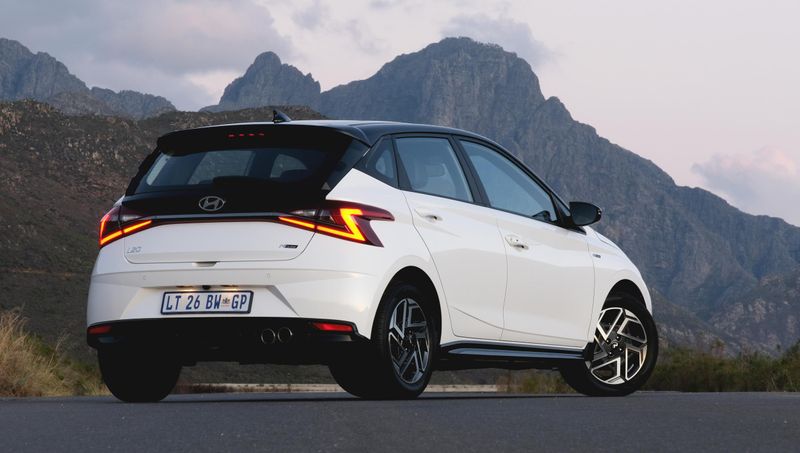
I stuck the transmission into Drive and made my way to Riebeeck Kasteel. The total trip distance was around 200 km, a fair test of a car’s abilities.
The first thing to report is a pretty sweet engine note from the rear pipe. It’s not even pretending to be a hot hatch, so neither will I – but it’s engaging, far more than I thought it would be!
Acceleration is satisfyingly linear considering it has a tiny capacity, forcefully-aspirated engine. At under 4 metres long, it’s a pleasure to swap directions in, scrubbing off speed as you do – but that’s where the 180 Nm of torque comes in, quickly getting you back up to speed again to chuck it into the next bend.
So, I guess what I’m saying is that the i20 N Line loves a roundabout, or three, and it’s an utter hoot to drive!
We will have the Hyundai i20 N Line on test soon so you can expect to see a thorough evaluation on Cars.co.za in the near future.
What’s the interior like?
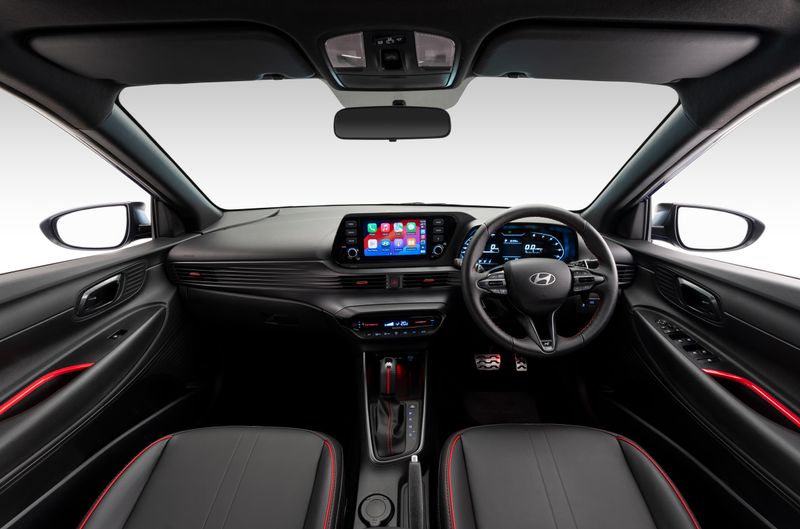
I genuinely enjoyed my time driving the i20 – the cabin is airy, the cockpit suitably ergonomic thanks to a grippy pew with plenty of adjustability including tilt and telescopic reach adjustment, a feature present across the i20 range. As a result, it’s easy to get comfortable and remain that way for the rest of the trip.
Furthermore, the N Line boasts automatic climate control versus the manual air-conditioning in the Executive and Premium derivatives, but that shouldn’t be a deal breaker for buyers. Importantly, the i20 has a wealth of charging points and sockets including a 12V socket, USB ports and USB-C ports!
For more specification details, see this: Hyundai i20 facelift (2024) Price & Specs
In summary, while the i20 N Line didn’t surprise me, it continued to impress me as a car that’s worthwhile considering in this segment. If value-for-money is a factor, I’d almost certainly opt for a lower trim level – the automatic i20 Executive at R349 900 in particular stands out as the sweet spot in the i20 range. But if you’d like the extra performance and some of the hop-ups that come with owning the flagship, I wouldn’t blame you for choosing the N Line, it’s a cracker!
How much does the new Hyundai i20 cost in South Africa?
Hyundai SA has reduced its pricing structure for the Grand i10, 120 and Venue compact SUV.
Hyundai i20 1.2 Premium 5MT – R309 900 (was R333 500)
Hyundai i20 1.2 Executive 5MT – R329 900 (was R448 900)
Hyundai i20 1.4 Premium 6AT – R329 900 (was R366 900)
Hyundai i20 1.4 Executive 6AT – R349 900 (was R396 500)
Hyundai i20 1.0T N Line 7DCT – R467 500
The prices above include a 5-year/150 000 km vehicle warranty, a 7-year/200 000 km drivetrain warranty and a 4-year/60 000 km service plan.
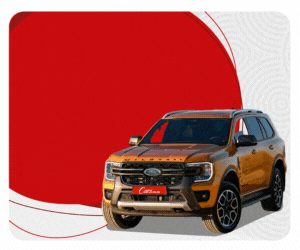
Categories
- Buying Advice
- Car Lunches
- Car News
- Car Review
- Car info
- motortrader.co.ug Consumer Award
- motortrader.co.ug Opinion
- motortrader.co.ug Report
- Classic
- Competition
Vehicle types
- SUV
- Hatcback
- Sedan
- Crossover
- Sports Car
- Coupe
- Bakkie
- Double Cab Bakkie
- Electric
- 4x4
Popular brands
- Volswagen
- Toyota
- BMW
- Mercedes-benz
- Ford
- Audi
- Hyundai
- Renault
- Nissan
- Suzuki
